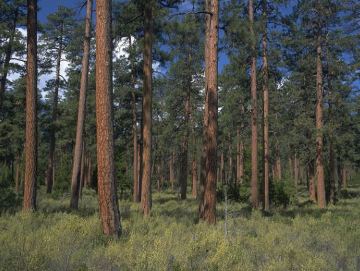I have always been a Tree Person. When I go hiking, I’m the one taking close-up photo of a  particularly gnarled root system or the jigsaw puzzle-piece shaped bark of a ponderosa pine. Don’t get me wrong; I love a gorgeous view. But my phone camera rarely captures the grandeur of a mountain range, so I give up and zoom in. In general, actually, I like to break things down – projects, experiences, and yes, views – into their individual components. When standing in front of you all during the High Holy Days, I looked for specific faces of people I knew.
particularly gnarled root system or the jigsaw puzzle-piece shaped bark of a ponderosa pine. Don’t get me wrong; I love a gorgeous view. But my phone camera rarely captures the grandeur of a mountain range, so I give up and zoom in. In general, actually, I like to break things down – projects, experiences, and yes, views – into their individual components. When standing in front of you all during the High Holy Days, I looked for specific faces of people I knew.
A few weeks ago at the ballet, I sat in the second row, mesmerized by the dancers on stage. There must have been twenty bodies, all moving to the music. Arms rose in unison, heads tilted, feet pointed, knees bent.
And yet I kept getting stuck on a single dancer. I would follow her intently, from one end of the stage to the other, up into the air as she was lifted by her partner and then back down again. I looked at the way her pointed toe hit the ground, I scrutinized the speed with which she pirouetted, I analyzed her facial expression. It wasn’t the particular ballerina that was so overwhelmingly engaging – all of the artists on stage were magnificent dancers. Rather, my tendency to isolate something specific to pay attention to had caused me to focus entirely on only one component of the action taking place in front of me.
As I became aware of what I was doing, I forced myself to zoom back out, to let the part be part of a whole, and to watch the whole company as if it were one organism. All twenty dancers, and the music, and the lights, and the choreography, and even the audience surrounding me became part of the experience, an unfolding story that could not have been told by any one of the dancers alone.
I am a Tree Person. And this means I sometimes lose sight of the forest. Perhaps you are a tree person too.
 Or perhaps you are a forest person, someone who pulls over for every sweeping vista. Forest people see the entire scope of a process and the ways in which, eventually, we will get there. They just might not notice the puzzle-piece bark.
Or perhaps you are a forest person, someone who pulls over for every sweeping vista. Forest people see the entire scope of a process and the ways in which, eventually, we will get there. They just might not notice the puzzle-piece bark.
Two schools of interpretation emerged in the second century around the study of Torah. The school of Rabbi Ishmael was all about the forest. Torah, Rabbi Ishmael taught, “speaks in the language of people.” Just as people use synonyms to reinforce points, so too does the Torah. Thus, he saw no point in searching for deep meaning in the minutia: repetitive phrases or words that seemed to tack on an extra letter. Instead, he sought to find clarity in the overarching message. Rabbi Akiva, on the other hand, paid attention to the trees. He believed the placement of every single letter of every single word, and even the way the individual letters were formed on the parchment, was purposeful and had something to teach us.
Both Akiva and Ishmael’s interpretations have been preserved authoritatively in Torah commentaries used over the past 1800 years, and both methods yielded creative and fascinating understandings of our text. Jewish tradition teaches us that the world works best when it is in balance. Maimonides teaches that we are healthiest when we live in moderation.
Last month, I officiated at my cousin’s wedding. When I asked each half of the wedding couple what it was that they loved most about each other, I learned that one is incredibly detail-oriented. Everything has its right time and place and moment. The other is almost the exact opposite – full of spontaneity, always ready for an adventure. And each of them articulated the level to which it was their partner that brought out the aspects they lacked in themselves. Mr. Details knew he would never take exciting risks without Mrs. Adventure and Mrs. Adventure knew she would never see the tiny flowers popping up through the cracks in the pavement if Mr. Details did not point them out to her.
It struck me the other night, as I watched the dancers twist and turn and balance seamlessly between their individual roles and their part in creating a complex piece of art in motion, that we all have that opportunity to find that balance, to appreciate both the trees and the way they come together to form a forest.
Sometimes it is in noticing the little things that we find our moments of gratitude, and other times it is in stepping back to look at the fuller picture. In this month of gratitude, I challenge us all (myself included) to seek the picture we are less inclined to naturally look for. Perhaps that means zooming in and noting a particular choice made by a particular person. Perhaps it will require zooming out and recognizing the variety of efforts that went into a moment. Whichever zoom you choose, I hope that there you may find beauty.




One Response
Dear Rabbi,
We have not met yet. Your thoughts are interesting and thought provoking. In my career, I found success by focusing on the forest. Most of the associates I worked with were good at trees, so even though I was the superior, their contributions were valued, because they added something to our results, their expertise and ability to execute. . Today is different. I am divorced, and have been diagnosed with a fatal disease, Cardiac Amyloidosis. While developing a strategy to fight this is critical, getting into the details and assembling a care/provider team that will work seamlessly together, be experts in their chosen field & make me a partner to prolong my life is essential. So after 40 years of focusing on forests, I’m now focusing with a sense of urgency on trees, not my best skill, but I have a lot at stake.
Scott